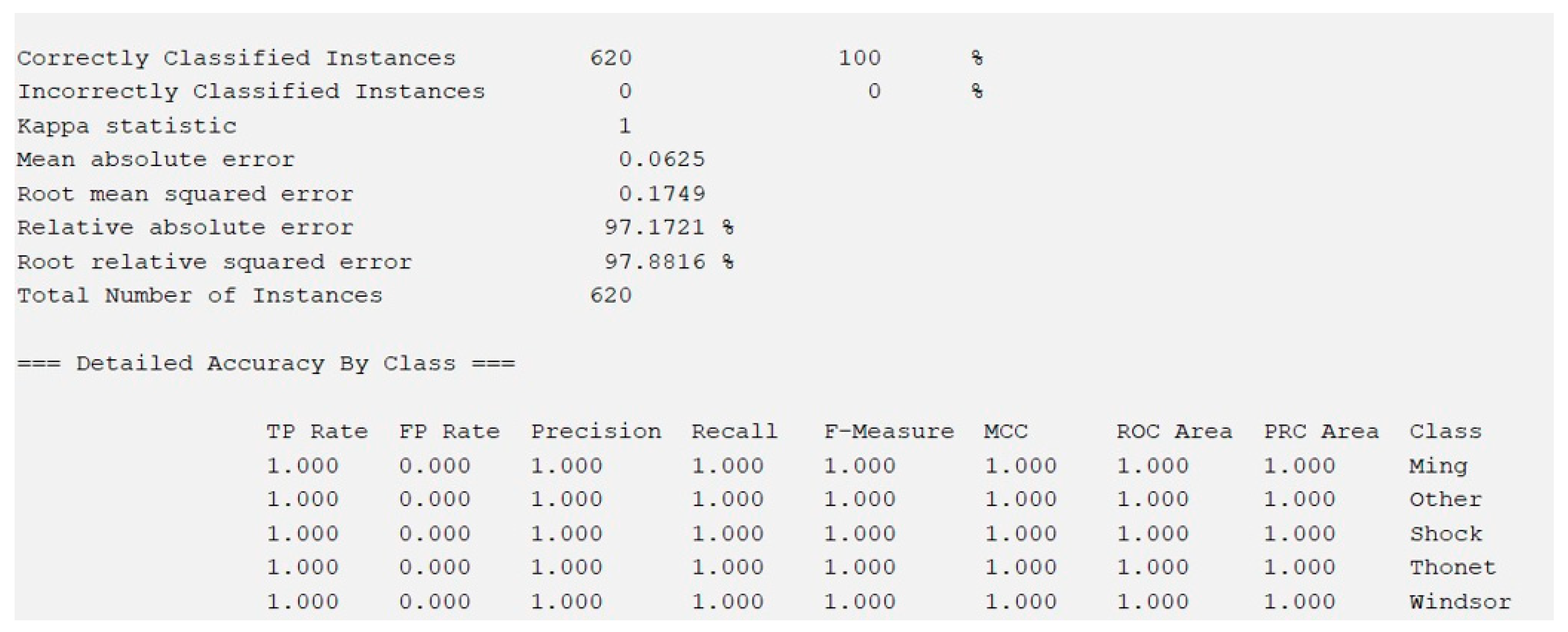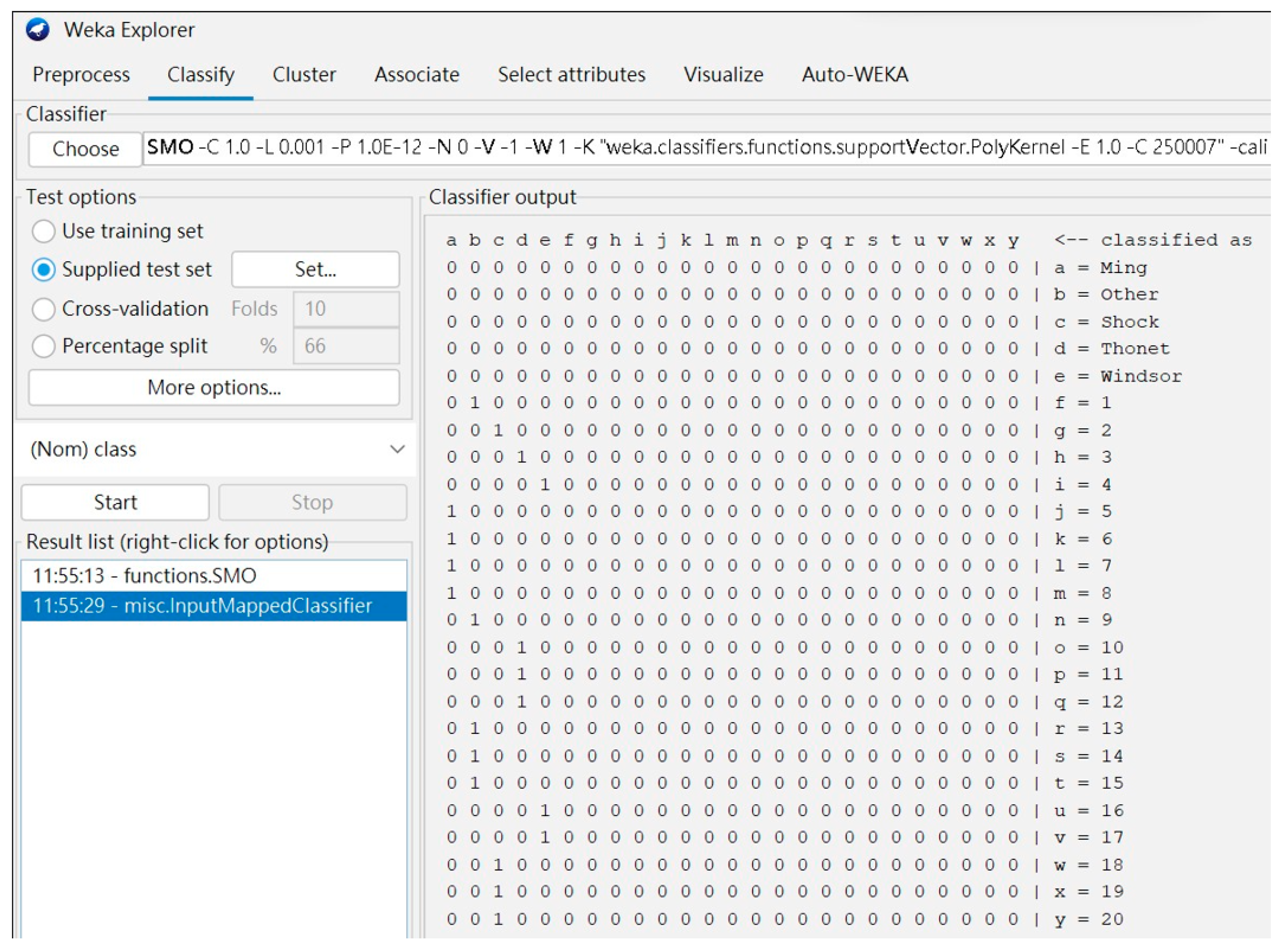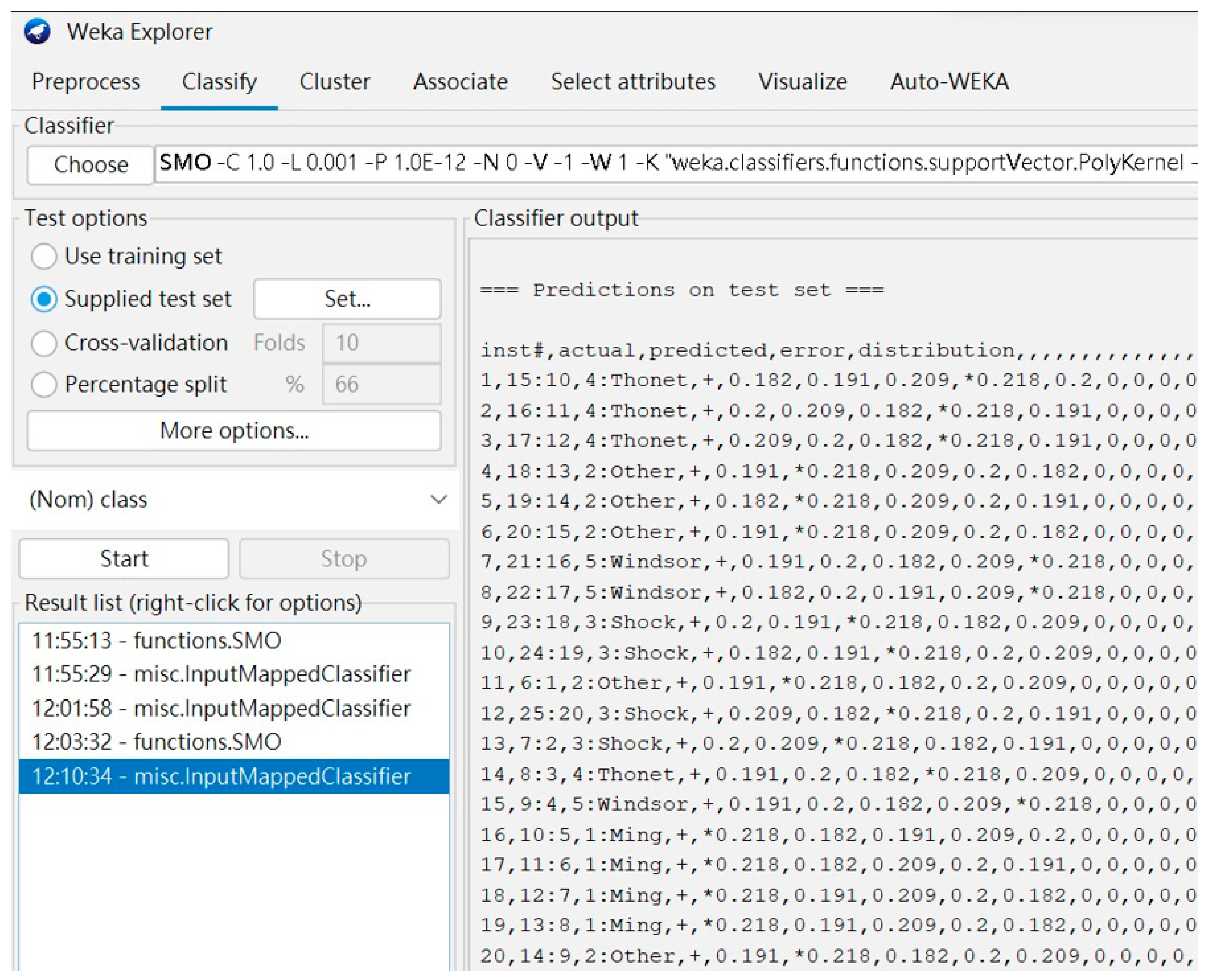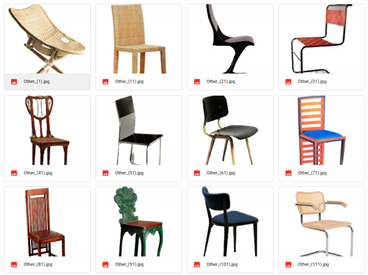Using Machine Learning to Identify Product Styles †
Abstract
:1. Introduction
- Feature-matching theory: Things or shapes have attributes or features that must be analyzed while considering the quality and quantity of the attributes [5].
- Shape recognition: If the pattern is identified for each component, the recognition of the whole pattern is required with generalization, which is a bottom-up processing of the feature comparison theory. If the pattern is identified by the overall pattern, each component can be identified. This process is called a top-down process of the template comparison theory [6].
2. Method
2.1. Chairs
2.2. Research Methodology
3. Conclusions
Author Contributions
Funding
Institutional Review Board Statement
Informed Consent Statement
Data Availability Statement
Conflicts of Interest
References
- Tsai, H.-C. An Analysis of Study on the Features Design from Hans J. Wegner in Denmark. Master’s Thesis, National Taiwan Normal University, Taipei, Taiwan, 2011. [Google Scholar]
- Bhaskaran, L. Design of THE Times: Using Key Movements and Styles for Contemporary Design Paperback; RotoVision: Brighton, UK, 2005. [Google Scholar]
- Chan, C. Exploring individual style in design. Environ. Plan B Plan. Des. 1992, 19, 503–523. [Google Scholar] [CrossRef]
- Qiu, M.; Cheng, Y.; Chen, P. Taiwanese Wood Furniture New Craftmanship; Jackwood Culture: Taipei, Taiwan, 2007. [Google Scholar]
- Cheng, C. Cognitive Psychology—Theory and Practice; Laureate Publishing: Slaton, TX, USA, 1993. [Google Scholar]
- Pahl, G.; Beitz, W. Engineering Design: A Systematic Approach; The Design Council: London, UK, 1988. [Google Scholar]
- Kuo, P. Image Super Resolution Based on Deep Learning; National Cheng Kung University: Tainan, Taiwan, 2015. [Google Scholar]
- Kim, D.; Shin, K.; Woo, J. Displacement Measurement of Steel Pipe Support Using Image Processing Technology. J. Image Graph. 2020, 8, 80–84. [Google Scholar] [CrossRef]
- Vimina, E.R.; Poulose, K. Content Based Image Retrieval Using Low Level Features of Automatically Extracted Regions of Interest. J. Image Graph. 2013, 1. [Google Scholar] [CrossRef]
- Syakirin, N.; Fauadi, M.; Awang, N. Some Technique for an Image of Defect in Inspection Process Based on Image Processing. J. Image Graph. 2016, 4, 55–58. [Google Scholar] [CrossRef]
- Haffey, M.K.D.; Dufty, A.H.B. Knowledge discovery and data control mining in design environments. In From Knowledge Intensive CAD to Knowledge Intensive Engineering; Cugini, U., Wozny, M., Eds.; ITIFIP; Springer: Boston, MA, USA, 2000; Volume 79, p. 59. [Google Scholar]
- Kane Watanabe, W. Western Furniture Integration; Kodansha Ltd.: Tokyo, Japan, 1980. [Google Scholar]
- Nishikawa, R. Illustrated Classic Chairs; Taiwan Tohan: Taipei, Taiwan, 2015; pp. 93, 224. [Google Scholar]
- Hauffe, T. An Analysis of Study on the Features Design from Hans J. Wegner in Denmark. In Design: A Concise History; Laurence King: London, UK, 1998; pp. 126–127. [Google Scholar]
- Fang, H.; Hu, J.; Peng, L. History of Modern Furniture in the World; Central Compiler: Beijing, China, 2005; pp. 270–275. [Google Scholar]
- Shimazaki, S. Japanese Chairs; Seibundo Shinkosha: Tokyo, Japan, 2007. [Google Scholar]





| Images |  |  |  |  |
| Chair | Shaker | Ming | Thonet | Windsor |
| Figures |  |
| Chair | Other |
| Filter | Function | Accuracy | Absolute Dispersion |
|---|---|---|---|
| BinaryPatterns PyramidFilter | Extraction of rotation-invariant numerical histograms of local binary patterns from images. | 90% | 25% |
| EdgeHistogramFilter | A filter for extracting MPEG7 boundary histogram features from pictures. | 85% | 37% |
| JpegCoefficientFilter | A batch filter for extracting JPEG coefficients from images | 95% | 11% |
| PHOGFilter | A filter for extracting the directional gradient histogram value PHOG from the image. | 90% | 26% |
| Classifier | Success Rate | Failure Rate | Absolute Dispersion |
|---|---|---|---|
| SMO | 98% | 0.073 | 8% |
| J48 | 96% | 0.097 | 16% |
| RandomForest | 99% | 0.096 | 19% |
| RandomComitee | 99% | 0.097 | 16% |
| RandomSubspace | 99% | 0.097 | 18% |
Disclaimer/Publisher’s Note: The statements, opinions and data contained in all publications are solely those of the individual author(s) and contributor(s) and not of MDPI and/or the editor(s). MDPI and/or the editor(s) disclaim responsibility for any injury to people or property resulting from any ideas, methods, instructions or products referred to in the content. |
© 2023 by the authors. Licensee MDPI, Basel, Switzerland. This article is an open access article distributed under the terms and conditions of the Creative Commons Attribution (CC BY) license (https://creativecommons.org/licenses/by/4.0/).
Share and Cite
Wang, H.-H.; Chen, Y.-L. Using Machine Learning to Identify Product Styles. Eng. Proc. 2023, 55, 39. https://doi.org/10.3390/engproc2023055039
Wang H-H, Chen Y-L. Using Machine Learning to Identify Product Styles. Engineering Proceedings. 2023; 55(1):39. https://doi.org/10.3390/engproc2023055039
Chicago/Turabian StyleWang, Hung-Hsiang, and Yen-Ling Chen. 2023. "Using Machine Learning to Identify Product Styles" Engineering Proceedings 55, no. 1: 39. https://doi.org/10.3390/engproc2023055039
APA StyleWang, H.-H., & Chen, Y.-L. (2023). Using Machine Learning to Identify Product Styles. Engineering Proceedings, 55(1), 39. https://doi.org/10.3390/engproc2023055039







